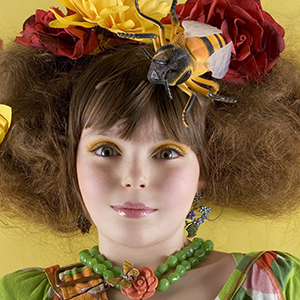KIDS FOR SALE
stereotypes and gender roles
The projects KIDS FOR SALE and IDOLS (2006-2012) explores stereotypes and gender roles demonstrating how toys promote the consumption of material goods and idealized societal roles in accordance with their genre. These images, produced in doll-box format, characterize the sexist patterns of behavior adults can so often employ to manipulate and form a child’s identity. Consumerism can easily distort a child’s view of reality and the pursuit of material goods can become a central focus of a child’s life.
Today’s youth are exposed to a curated and idealized version of reality, in which the consumption of goods and services seem to be the key component of a happy and successful life.
Consumer-driven media also promote stereotypes and can reinforce gender roles. Girls are often shown in passive roles, while boys are shown as active and dominant. This can easily lead children to internalize these stereotypes encouraging them to conform to certain gender roles in order to be accepted.
BARBIE
The Barbie doll, both a caricature of the moral and physical ideals of America, and a symbol of woman’s emancipation from the kitchen…. Barbie’s focus on fashion and appearance perpetuates traditional gender roles by emphasizing feminine traits and interests. The Barbie doll teaches children that they must dedicate themselves to the pursuit of happiness by acquiring material goods that possess social approval and status, but from another viewpoint, it also tells little girls that they too can become pilots, doctors or rock stars…







IDOLS
The series IDOLS is also related to the issues explored in KIDS FOR SALE (2006-2012) Each child representing a theme or title, illustrates the confusing and potentially dangerous contradiction between his/her identity & that which is projected by a consensual market driven society.

IDOL#04-BETTY

IDOL#03-SUZIE

IDOL#01-MARLENE

IDOL#02-GRETA

IDOL#05-LUCY

